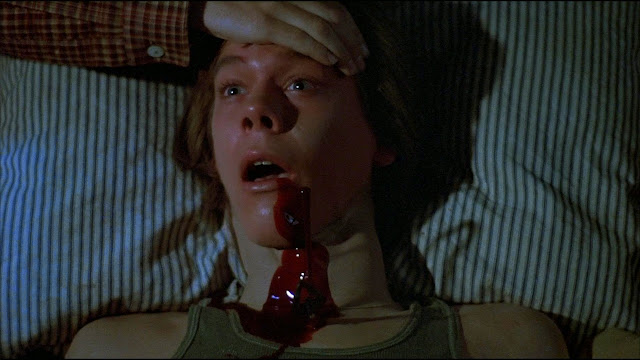When first watching adverts for American Sniper to be frank, I wasn’t too excited. Watching the imminent murders of hundreds of Islamic citizens still doesn’t stand at the top of my to do list, but as I spoke to countless people - who claimed it to be a ’10/10’ and a ‘masterpiece’ - I decided I would have to see it for myself.
The film is a controversial biopic following America’s most ‘dangerous’ sniper, some might to go as far as to call it propaganda. This name falls to the movie, as it can be viewed as a fascist glorification of war heroes and therefore, their murder. Nick Broomfield even labeled it as a movie ‘Hitler would be proud to have made’. This isn’t to be seen as criticisms of a soldier, for doing what he's told, not at all. However, this film cannot be seen as only a human’s story, with no political ripples.

Very little actually happens in American Sniper. The spiritual and emotional progress of the characters is limited to basic states of existence (good or bad, alive or dead), and none of them evolve despite numerous encounters with tragedy and misfortune. By the end of the movie, Kyle, his buddies, and their enemies alike are all making the same kinds of choices they were making in the beginning. Even Kyle, who regarded himself as a sheepdog guarding sheep against wolves—in the film, strangely, the sheep are either American citizens or Marines, or both—never sways from that belief. There is little potential reflected or implied in the characters, and no surprises. Shocks, yes—explosions, yes—but plot twists, edification, some hint at the sublime behind the everyday deaths … no.
Kyle spends his time overseas trying to kill ‘bad guys’, and his time at home in a relationship with his wife. Despite a wealth of action, and opportunities to expand or grow, the only thing that changes over time is that the man onscreen begins to express remorse over some of the women and children he killed; he maintains the necessity of killing terrorists that, to his mind, are a direct threat to America, but once back home, he finds it necessary to do something, anything, to heal himself and others like him. Late in the film, this leads to his generously sharing his time and energy with other combat veterans suffering from the grievous injuries they sustained in combat; this seems like progress, and is satisfying to watch and feel.

The film has come in for sharp criticism for being jingoistic and characterising Iraqi insurgents as “savages” and Fallujah as “the new Wild West”. Despite this, the film broke box office records in the US for the Super Bowl weekend, grossing £21m. It is by far the most commercially successful film about the recent wars in the Middle East. Needless to say, positive viewers are engrossed by the heartwarming, patriotic story portrayed, too much- in order to look past blatant Islamophobia.
From all the success Sniper has secreted, some viewers ask the question: should a film like this be made now, of all times while troop activity still powers on? Or is it just an attempt to boost moral that has faded since the first invasion after the 9/11 attacks?
This reflects a truth that the movie itself seeks to avoid: War is political, and a movie about war is bound to make political pronouncements. When you sit down to enjoy American Sniper, you are committing a political act, and your evaluation of the movie, and Kyle as a person, reflects your political attitudes. But it's more complicated than the simple equation that progressives dislike it and conservatives enjoy it. Politics notwithstanding, those who've seen it tend to describe the experience in religious terms: awe-struck congregations of Americans seeing the Iraq war as solely the fault of the Middle East.
Possibly the most ridiculous thing about the film is the fact that it views the killing of one assassin ‘Abu Musab al-Zarqawi’ as the decider of the war. Maybe Clint Eastwood doesn't understand that the concept of terrorism is everywhere and these ‘evil’ and ‘savage’ people don’t only exist in Iraq or the Middle East. Never the less, we see Chris Kyle attempting to fulfil his mission by shooting the all black wearing, pirate stubble adorning ‘baddy’.
At the center of American Sniper is Bradley Cooper's convincing performance as Chris Kyle. It confirms that Cooper, having graduated from the "Hangover" films to the Oscar-nominated seriocomic portrayals in "Silver Linings Playbook" and "American Hustle," can henceforth be considered a Serious Actor. Cooper inhabits Kyle's skin, bulking up physically and keeping his usual manic energy at a simmer instead of a full boil.
It's unfortunate, though, that Cooper's introspective, nuanced work comes in the service of such a superficial portrait. If the star does his utmost to make a one-dimensional character interesting, his director, Clint Eastwood, adapts Kyle's memoir — a life story rife with moral complexity — by hammering it flat.
But the remorse, at least, may be largely fictional. If the real-life Chris Kyle—or, at least, the Chris Kyle who wrote American Sniper, the best-selling 2012 memoir—is to be believed, he ended up rejecting any real responsibility for his choices. Some say that heroes are defined in part by the epiphanies they experience. Kyle learns nothing he didn't already know about war and life during his time onscreen, and that makes him something else. But what? The movie is unwilling to hazard a guess, although the answer might possibly lie in the title.











































